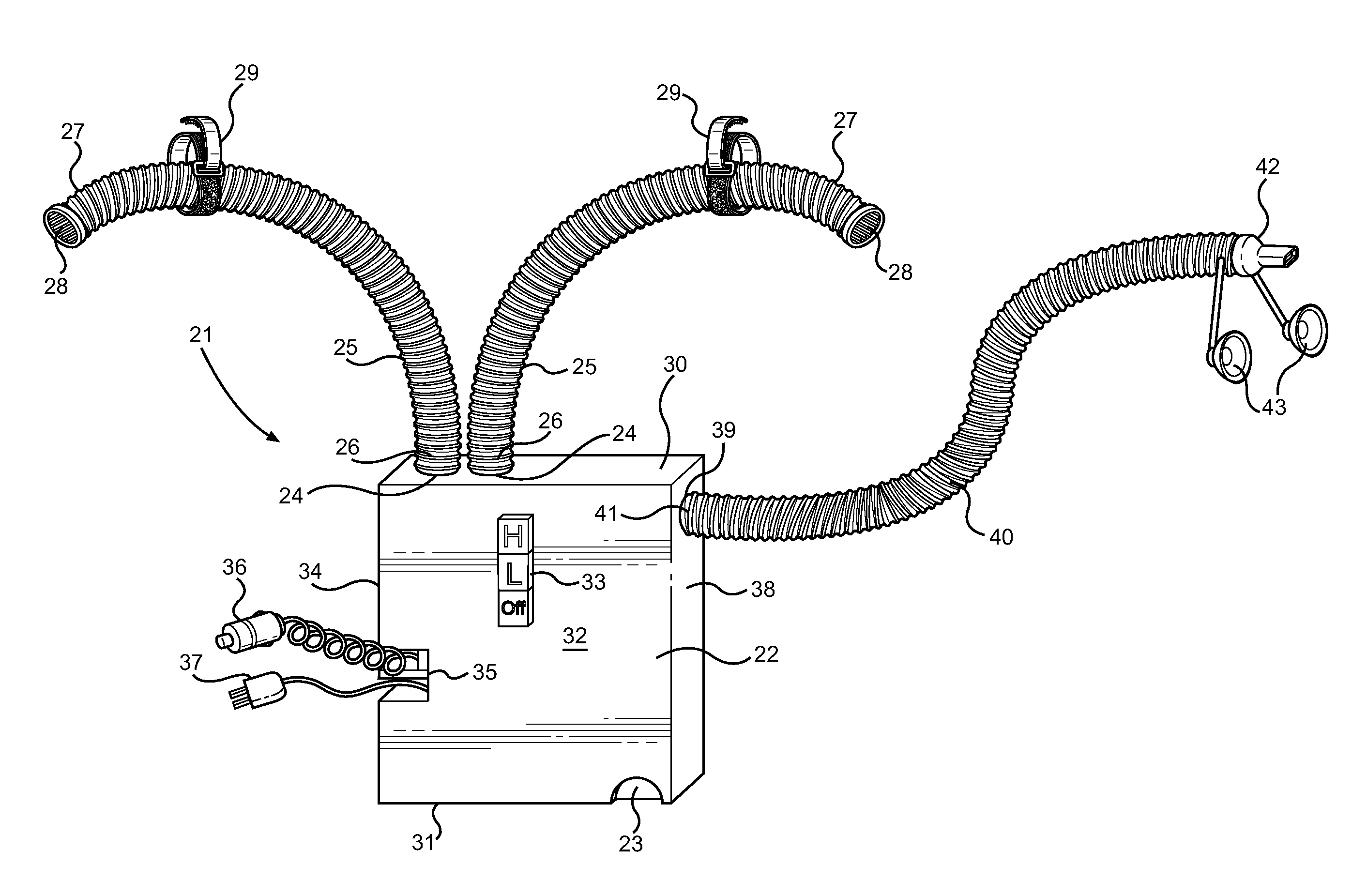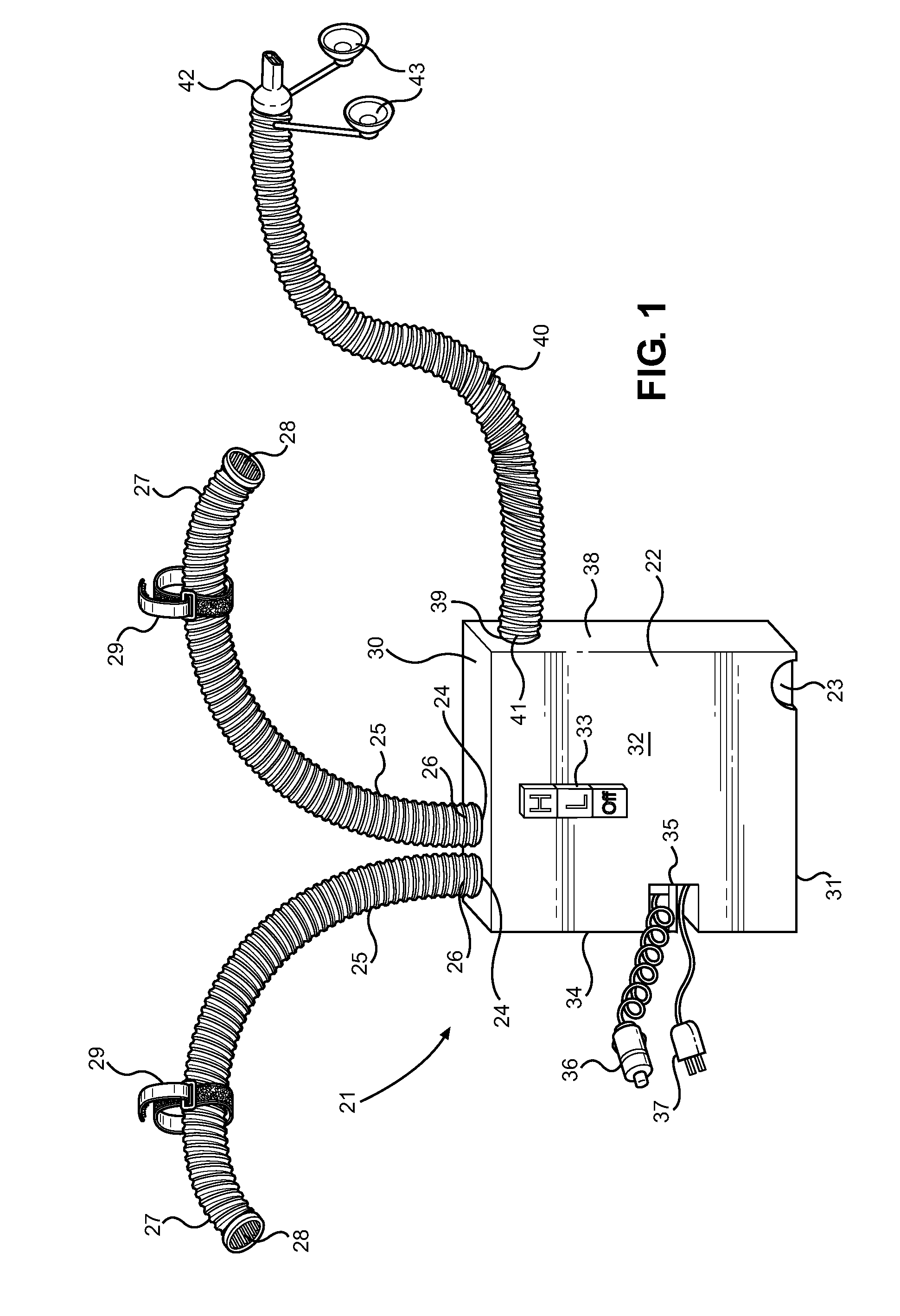Portable Air Conditioning Device for Vehicles
a portable, air-conditioning technology, applied in the direction of domestic cooling apparatus, lighting and heating apparatus, cooling fluid circulation, etc., can solve the problems of limited o'donnell devices, lack of flexible air duct systems, and not specifically designed to be used with existing vehicles, etc., to facilitate the direction of air flow, facilitate the operation of the device, and reduce the cost
- Summary
- Abstract
- Description
- Claims
- Application Information
AI Technical Summary
Benefits of technology
Problems solved by technology
Method used
Image
Examples
Embodiment Construction
[0030]Reference is made herein to the attached drawings. Like reference numerals are used throughout the drawings to depict like or similar elements of the portable air conditioning device for vehicles. For the purposes of presenting a brief and clear description of the present invention, the preferred embodiment will be discussed as used for cooling the interior of a vehicle. The figures are intended for representative purposes only and should not be considered to be limiting in any respect.
[0031]Referring now to FIG. 1, there is shown a perspective view of the present invention. The present invention is a compressor-based refrigerant system that uses air to exchange heat. The present air conditioning device 21 comprises a housing 22 that is composed of rigid material such as durable plastic or thin metal. The housing comprises a closed top 30, bottom 31, and sidewalls, forming an internal volume adapted to enclose various air conditioner parts therein. The closed bottom 31 wall ma...
PUM
 Login to View More
Login to View More Abstract
Description
Claims
Application Information
 Login to View More
Login to View More - R&D
- Intellectual Property
- Life Sciences
- Materials
- Tech Scout
- Unparalleled Data Quality
- Higher Quality Content
- 60% Fewer Hallucinations
Browse by: Latest US Patents, China's latest patents, Technical Efficacy Thesaurus, Application Domain, Technology Topic, Popular Technical Reports.
© 2025 PatSnap. All rights reserved.Legal|Privacy policy|Modern Slavery Act Transparency Statement|Sitemap|About US| Contact US: help@patsnap.com



